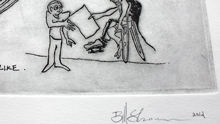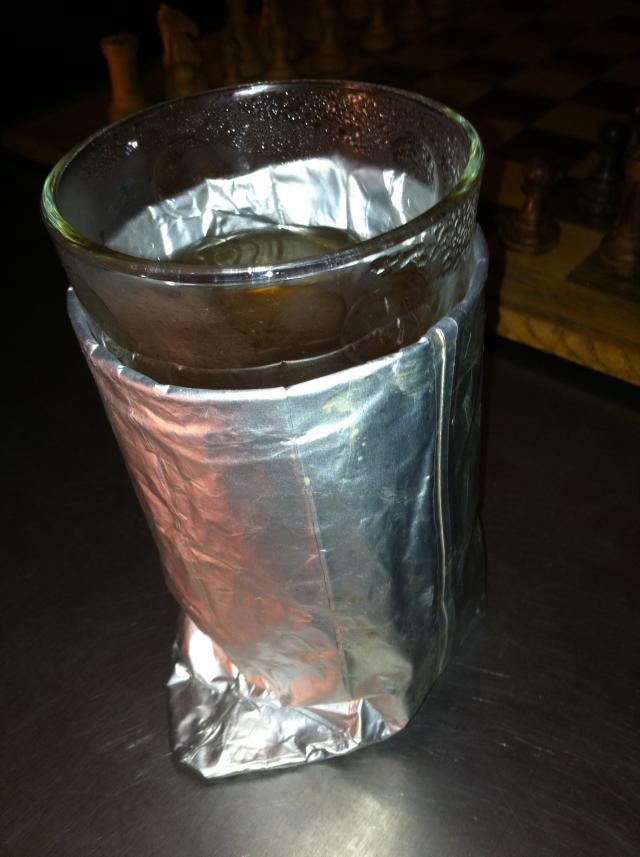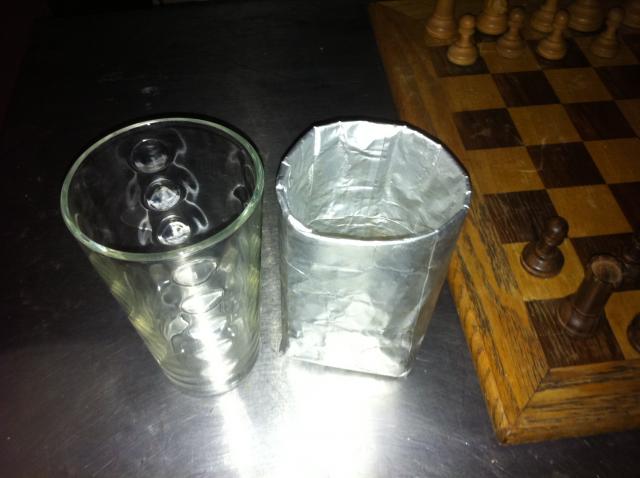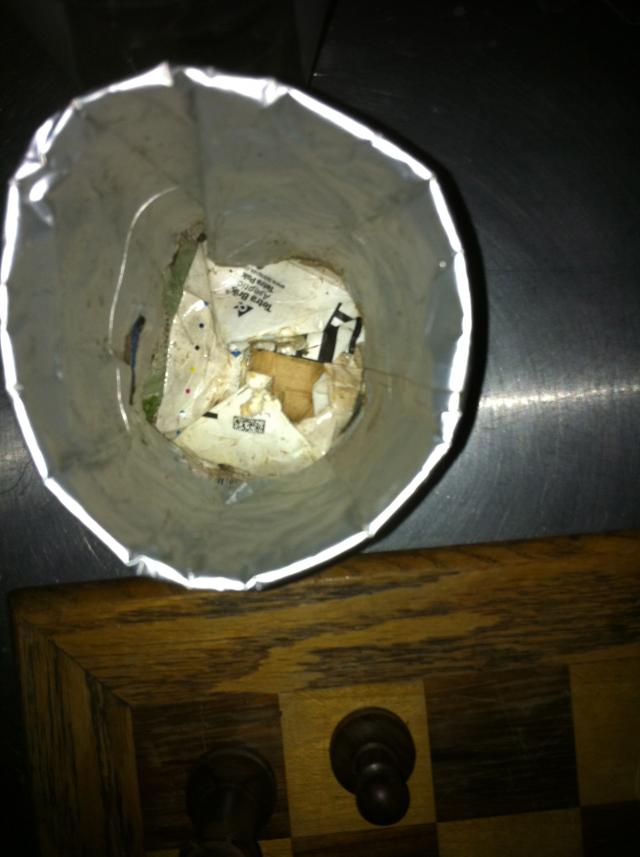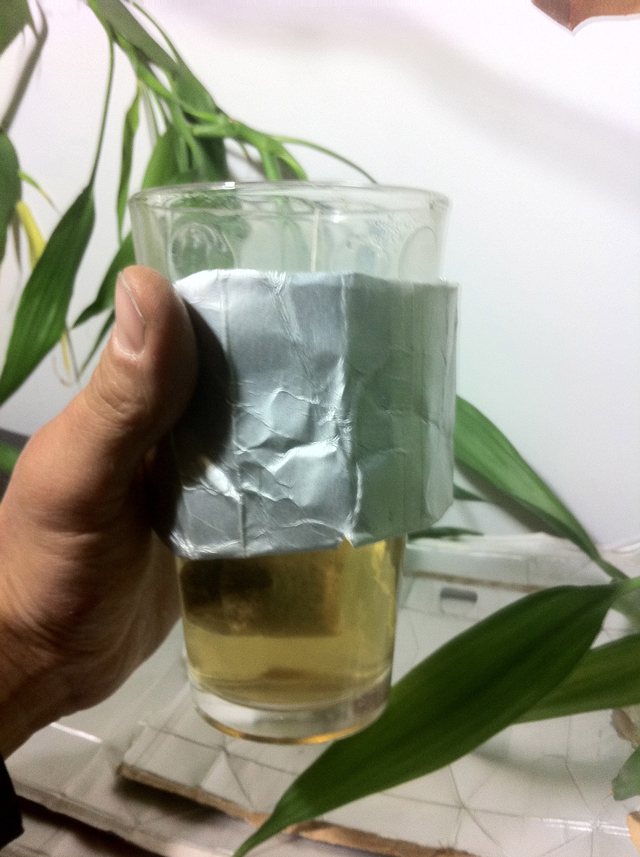TShirts, Stickers, Prints, Art Objects
WhatIsWhat 1.0 2003
MAKE A TETRAPAK SLEEVE FOR HOT BEVERAGES
ABOVE: I like to drink my tea in a taller glass rather than the traditional tea cup. The glass has no handle yet is very hot. With the insulation quality of the tetrapak I can protect my fingers and retain heat in the glass. Especially good for winter teas and coffees.
The video is pretty self evident but there are some details that are important. Maybe the next time I will narrate but for now I will just write. The video starts with a shot of the tetrapaks soaking in grey water. In this case the water is rain water collected over a weeks time that has fallen into a small garbage can. I use this water because to use fresh water from the tap to process Tetrapaks diminishes the value of the recycling reuse process. The only time I use fresh water is to wash the tetrapak once it is completely shaped and dried out. The soaking also serves to soften the paper of the Tetrapak to allow it to be turned inside out without ripping the open edge. If the Tetrapak were dry this transfromation would not be possible. The tetrapak must be completely soaked. The tetrapak corners need to be pushed in on each side alternately until the hand inside the tetrapak gets a firm hold on both corners and can pull them through. From there everything is pretty obvious in the video. The end of the video shows two different ways to leave the shape of the tetrapak. One is with the corners tucked in and the other with the corners poking out.
ABOVE: Sleeve holding glass with the corners pulled out. The poked out look gives the appearance of little feet and is a little more humorous than the cleanlines of the tucked in corners.
ABOVE: Side view of sleeve with corners tucked in next to glass.
ABOVE: Birdseye view of inside of the sleeve with the corners tucked in. It is sometimes necessary to ad an additional cutout piece that drops down into the bottom of the sleeve seen here. The added piece will serve to stablize the glass of liquid sitting on top of the tetrapak seams. The seams sometimes get too thick and form a spine down the middle of the sleeve bottom. Different tetrapak makers have different thicknesses of seams so sometimes all it takes is to pull the corner out and the problem is gone. Sometimes the glass will lean to either side of the bottom seam if the seam is too thick even with the corners pulled out. To keep the clean edge bottom drop cutout pieces on either side of the spine. This serves to bring up the sides and create a flat surface.
ABOVE: A variation on the full cup sleeve is the cutoff sleeve. it doesnt keep the glass warm as long but still protects the fingers.
In closing this is one of the first ways i reused a tetrapak. It really works if you like to keep your drink hot or cold. They last for years.

This Work, MAKE A TETRAPAK SLEEVE FOR HOT BEVERAGES, by Bill Shannon is licensed under a CC BY license.
